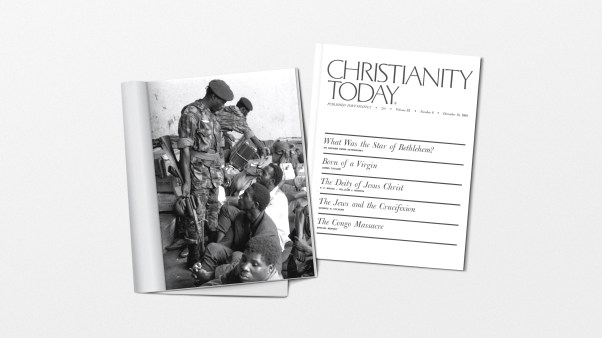There are many reasons I don’t pray: distraction, busyness, or the sense that I should be doing something. These are all terrible, of course, but I think the saddest reason is simply boredom. If you’ve grown up in church or simply acclimatized to the secular air we breathe, prayer can appear as small potatoes. It’s something good you know you’re supposed to do because God, like your Great Aunt Suzy, would like you to call more often. But there is little urgency or anticipation.
How much would change, I wonder, if we looked to the story of Moses and the burning bush as our paradigm for prayer?
We begin inauspiciously enough, with Moses tending sheep in Midian. Here he is, minding his own business, living his everyday life, when the fantastic intrudes upon him. On the “Mountain of God,” he sees a bush that was on fire, yet “it did not burn up” (Ex. 3:2). Unlike every other flame, this one uniquely did not depend on the bush for fuel, so it did not consume it but was nevertheless somehow transcendently present within it.
Curious at this sacred phenomenon, Moses approaches but stops short when God calls him by name from the flame, “Moses! Moses!” After recovering from the shock, he humbly replies, “Here I am.” To which the Lord responds by warning him, “Do not come any closer. . . . Take off your sandals, for the place where you are standing is holy ground” (Ex. 3:4–5). Moses rightly obeys, and from there his improbable interview with the Flame continues with the astonishing gift of the Divine Name and a commission to liberate Israel.
The whole encounter is remarkable, but it is particularly significant that the Holy One appears as fire, not to repel but to attract Moses—to cause him to draw near so he can meet with him and call him by name.
You see, Israel would come to know a more fearsome Yahweh revealed by fire. When the Divine Warrior routed the Egyptians at the Red Sea, he did so as a pillar of fire (Ex. 14:24). When they met their Redeemer at Sinai, he appeared in lightning, smoke, and flame (Ex. 19:16–25). Out of that flame he spoke to them, inviting them into his covenant. Predictably, this glory was so terrifying that they asked Moses to mediate for them—the fiery One was far too much for them. Importantly, as Israel was about to cross over to the promised land, Moses reminds them of their fear, telling them not to construct idols, for Yahweh “your God is a consuming fire, a jealous God” (Deut. 4:24; 5:4–5, 23–27).
It’s only in light of that later reminder that we can appreciate the marvel of Moses’ experience at the burning bush: In that moment, the God who is Fire did not consume. Instead, with gracious condescension, he invited Moses into the intimacy of personal relation, of address, of communion, of the exchanging of names.
Here the warmth, the presence, the mysterious and inviting light of God the Fiery One was on display. And yet, with the clear warnings about how Moses was to proceed, we are given to understand that God is still one and the same overwhelming Flame that Israel would prove unable to bear for most of its history.
Thankfully you and I, as participants in a better covenant, also have a better confidence “through Christ before God” (2 Cor. 3:4). We can cry out, “Abba, Father!” (Rom. 8:15) as we draw near to God “with a sincere heart and with the full assurance that faith brings” (Heb. 10:22).
And yet, the author of Hebrews warns that although he is “ours,” this God is nevertheless “a consuming fire” (Heb. 12:29).
In which case, none of this intimacy with God should ever be an excuse for the familiarity that so often breeds contempt. Certainly, there is no place for lethargy or boredom. To pray is to enter the Temple, the high and exalted place, where the Holy One dwells in majestic light (Isa. 57:15). It is to call on the name of Yahweh, the fear of Israel (Isa. 8:13).
Considering the One we are praying to, there should be an exhilarating rush of adrenaline and a quickening of the pulse when we take God’s name on our lips. We are called to pray anywhere and everywhere, but we should still look to “remove our sandals,” approaching him with holy trepidation, joy, and awe. Prayer is nothing less than an intimate encounter with the voice from the Flame.
Derek Rishmawy is a doctoral candidate at Trinity Evangelical Divinity School.
Have something to say about this topic? Let us know here.










